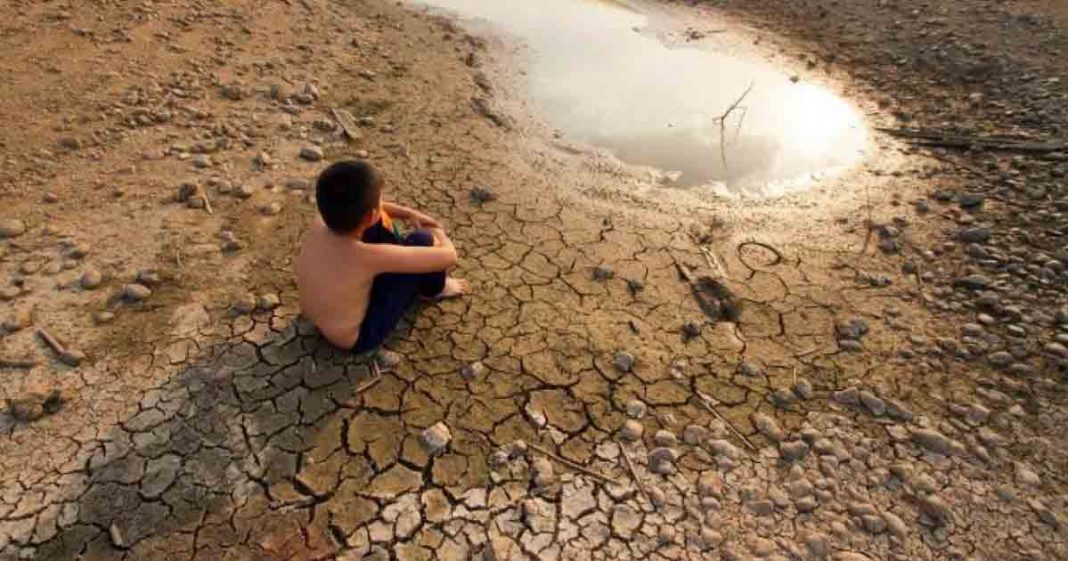The climate change crisis brings serious intergenerational injustices. People born today seem condemned to suffer many more floods, extreme heatwaves, droughts, and other climatic disasters throughout their lives than their grandparents, a situation that will undoubtedly condition their social and economic possibilities.
This has been revealed by new research published in the journal Science, which combines projections of extreme climate events from sophisticated computer models with detailed data on population life expectancy and global temperature trajectories from the Intergovernmental Panel on Climate Change (IPCC), to reach a single conclusion, if no action is taken against global warming, the population born in this decade and the next will see natural disasters become a recurring part of their lives.
Read more: Boris tells world to follow PM Khan’s example for tackling climate change
A problem that must be addressed as soon as possible
Specifically, the analysis shows that a child born in 2020 will endure an average of 30 extreme heat waves in his lifetime, even if countries meet their current commitments to reduce carbon emissions in the future, which is seven times more waves. heat than someone born in 1960. In addition, today’s babies will also experience twice as many droughts and wildfires when they grow up, and up to three times more river flooding and crop losses than someone who has just turned 60.
“Our results show that there is a serious threat to the safety of younger generations and require drastic reductions in emissions to safeguard their future, ” he explained in The Guardian Professor Wim Thiery, of the Vrije Universiteit Brussel in Belgium, who led the investigation and considers that people under 40 will have to get used to experiencing one “unprecedented” situation after another. In other words, they will have to endure heat waves, droughts, floods, and poor harvests that would have been virtually impossible – just a 0.01% probability – without global warming.
In any case, there is significant regional variation in the results. For example, a population of 53 million children born in Europe and Central Asia between 2016 and 2020 will experience roughly four times as many extreme events in their lifetime if current emission levels are maintained. Yet at the same time, a total of 172 million children of the same age in sub-Saharan Africa will face 5.7 times more extreme events, disproportionate consequences that highlight the profound geographic and social asymmetries.
Read more: Biden’s climate financing pledge: a promising end to climate change?
The study also offers one last very interesting piece of information: only the population that today is under 40 years of age will live to see the consequences of the decisions made today on emission cuts. In other words, the majority of those born before 1980 will have died before the impacts of those elections become evident in the world, a fact that supports the requests of millions of young people around the world who demand greater decision-making power. on the climate policies that will shape its future.
More population exposed to floods
The study published in Science was not the only research related to the increase in extreme weather phenomena that have seen the light this week. According to an article published in Nature and funded by NASA, the proportion of the world’s population exposed to floods grew by between 20 and 24%, a new estimate that is almost ten times higher than what previous models predicted. Specifically, between 2000 and 2015 the number of people living in floodplains around the world increased between 58 and 86 million people, with more than 255 million inhabitants being affected at least once by major floods in that period.
“We need to understand why people are moving to the floodplains and in what ways we can support flood mitigation,” said lead author Beth Tellman, a geography researcher at the University of Arizona. “I believe that satellite and terrestrial observations can be transformative in the way we think about building resilience in a world marked by climate change”, has assured this researcher, who has based her conclusions on the instruments of the imaging spectrometer of Moderate Resolution (MODIS) aboard NASA’s Terra and Aqua satellites.
Although the scientists did not study why people are moving to flood-prone regions, such as the Paraguay River basin, Tellman believes that elements such as the cost of living and the quality of infrastructure influence demographic changes. “People who move to the floodplains are probably the most vulnerable and marginalized populations, and they may not have many options to move elsewhere,” he said.
Read more: Covid-19 and climate change, the UN prime focus
According to the study, the proportion of people exposed to floods increased in 70 countries on all continents. In this sense, the increased exposure to floods was concentrated in low- and middle-income countries, and many of the countries are in sub-Saharan Africa and especially Asia: at least 213 million people are exposed to floods only in the south and southeast of this continent. Faced with this situation and to help prevention, NASA has developed tools such as the Global Flood Database, which can help public authorities determine the best action to protect themselves against future floods.
Wahid Bhat is a Journalist based in an Indian-occupied Kashmir. The author can be reached at bwahid32@gmail.com. The views expressed in this article are the author’s own and do not necessarily reflect the editorial policy of Global Village Space.













